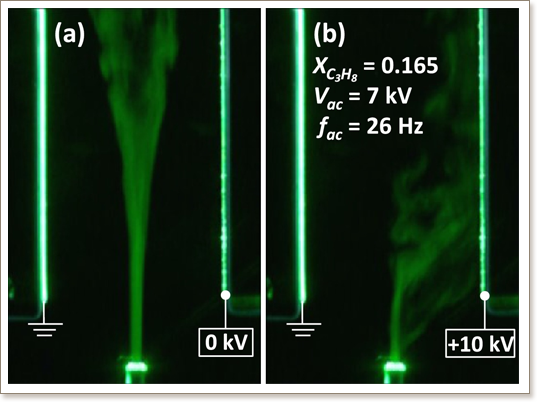

Flow instability in laminar jet flames driven by alternating current electric fields
G.T. Kim, D.G. Park, M.S. Cha, J. Park, S.H. Chung
Proceedings of the Combustion Institute, 36 (3), 4175-4182 (2017)

The effect of electric fields on the instability of laminar nonpremixed jet flames was investigated experimentally by applying the alternating current (AC) to a jet nozzle. We aimed to elucidate the origin of the occurrence of twin-lifted jet flames in laminar jet flow configurations, which occurred when AC electric fields were applied. The results indicated that a twin-lifted jet flame originated from cold jet instability, caused by interactions between negative ions in the jet flow via electron attachment as O2 + e → O2– when AC electric fields were applied. This was confirmed by conducting systematic, parametric experiment, which included changing gaseous component in jets and applying different polarity of direct current (DC) to the nozzle. Using two deflection plates installed in parallel with the jet stream, we found that only negative DC on the nozzle could charge oxygen molecules negatively. Meanwhile, the cold jet instability occurred only for oxygen-containing jets. A shedding frequency of jet stream due to AC driven instability showed a good correlation with applied AC frequency exhibiting a frequency doubling. However, for the applied AC frequencies over 80 Hz, the jet did not respond to the AC, indicating an existence of a minimum flow induction time in a dynamic response of negative ions to external AC fields. Detailed regime of the instability in terms of jet velocity, AC voltage and frequency was presented and discussed. Hypothesized mechanism to explain the instability was also proposed.